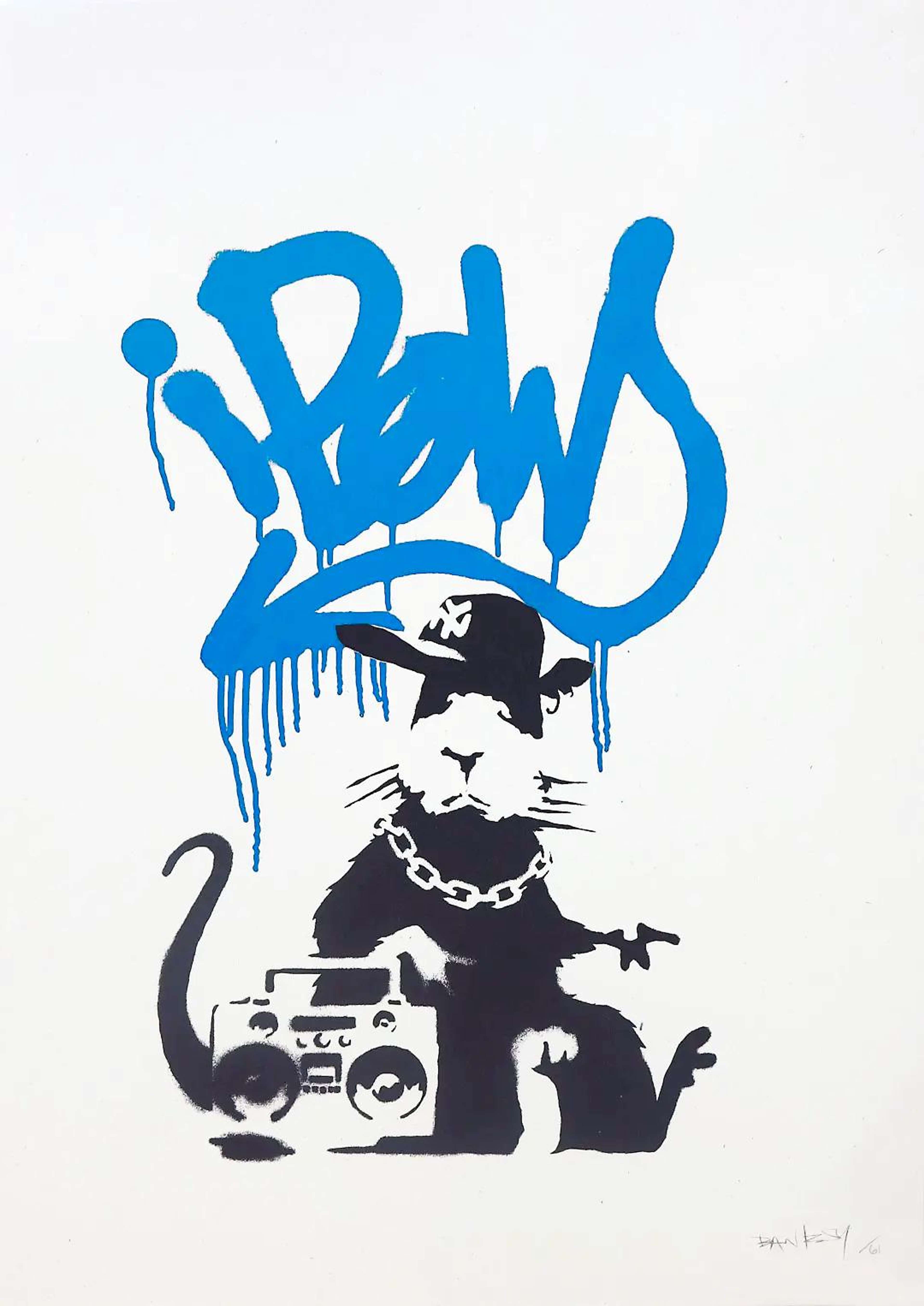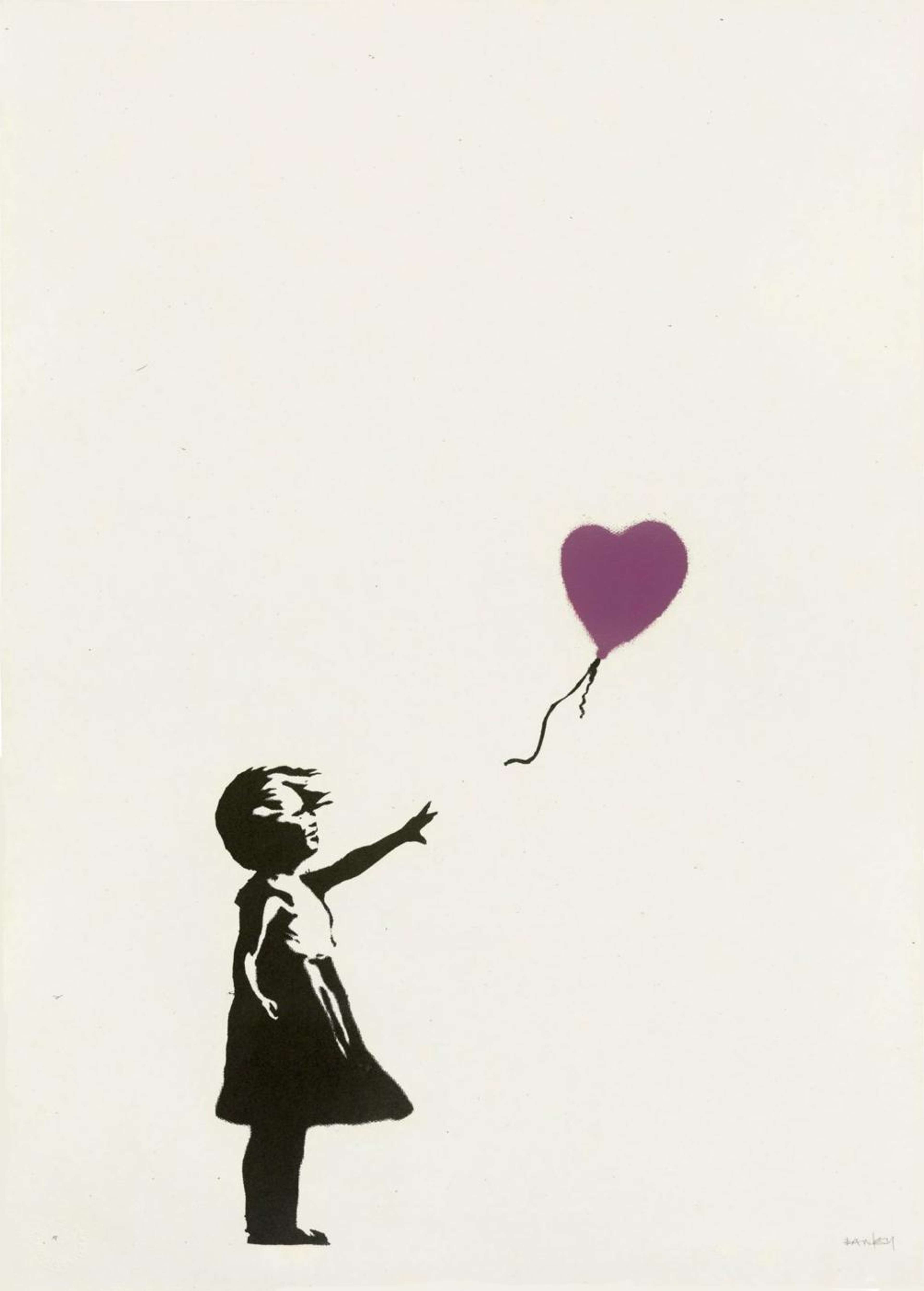Investing In An Artist Proof
 Gangsta Rat (AP Blue) © Banksy 2004
Gangsta Rat (AP Blue) © Banksy 2004Market Reports
Originals, limited editions, artist proofs: when it comes to prints, there are so many terms to know it can feel difficult to navigate this segment of the market.
In this article, we take a look at Artist Proofs, also commonly referred to as APs, to answer all your questions, from what they are to how they're made, and show you why you should invest in them.
What Is An Artist Proof?
A simple way of understanding an Artist Proof is to think of it as a finalised print that the artist approves to sign off the production of the Limited Edition. Artist Proofs are always made in connection with Limited Edition Prints.
At the start of the production process, artists and publishers request to review impressions of prints to see the current state of the image or of the printing plate, verify the quality of their work and, if needed, make corrections. The proof prints made at the early stages of production can be called test prints, trial proofs, state proofs or colour proofs, and are unfinished works the artist and printmaker work on.
Once the image is perfected and both the artist and the printmaker are fully satisfied with the result, a very limited number of impressions of the finished work is made before the production of the Limited Edition begins. Such prints are called Artist Proofs (or APs) and are identical in quality and nature to the prints that sit in the edition. Once an Artist Proof is made, the numbered edition is matched to that image and production of the editioned prints begins.
How Do I Recognise an Artist Proof?
Artist Proofs sit outside the numbered Limited Edition. They bear the signature AP, or Artist Proof. Usually, the number of Artist Proofs made is quite limited and sits between 10% and 15% of a limited edition series.
To mark the number of Artist Proofs made, artists may use fractions – for instance, AP 1/5 to indicate that the print is number 1 of a set of 5 Artist Proof prints – but they can also be unnumbered.
Often, artists will also mark the number of these prints in a different manner, such as roman numerals, or alphabetically, to differentiate them from the main edition and clarify how many were made.
 Girl With Balloon (purple) © Banksy 2004
Girl With Balloon (purple) © Banksy 2004How are Artist Proofs made? What is the difference between an Artist's Proof and a Limited Edition Print?
These days, Artist Proofs are made in exactly the same way as the prints that sit in the Limited Edition. This means that Artist Proofs are of identical quality and format to editioned prints.
However, traditionally APs were a form of quality assurance, and sometimes payment, for the artist—coming from the beginning of the print run, they tended to be better quality, crispy clean prints. They were often saved by the artist for friends and family, or to be sold at a higher value than the main edition. APs were traditionally better quality because, as the production process went on, the printing plates would gradually wear out and the quality of the resulting prints would decrease.
Since they were produced before the Limited Edition, Artist Proof prints had more vibrant colours and a higher definition and were therefore considered better and more prestigious than editions.
With newer technologies, this no longer holds true, and editioned prints and APs are now all of the same quality. Because print technology has evolved, and print-runs are largely consistent in quality, for some artists, the only difference between their main edition and their run of artist proofs will be in the little ‘AP’ annotation - and the price. Artist proofs are still generally more valuable, because of their exclusivity.
Artist Proofs vs Limited Edition Prints on the Market: Is an Artist Proof more valuable than a limited edition print?
Artist Proofs have been shown to fetch remarkably high prices when sold on the art market, especially compared to limited editions.
The top prices ever achieved by Artist Proofs were, unsurprisingly, for two versions of Banksy’s Girl With Balloon. An AP of Girl With Balloon (Gold) was sold at Sotheby’s London on 25 March 2021 for £1.1 million, while a year before, on 23 September 2020, Christie’s London sold Girl With Balloon (Purple) for £791,250, almost doubling the top price achieved by the limited edition of the same print, which sold at Christie’s London for £475,000 on 1 April 2021.
After Banksy's performance, that of the other two top artists in the contemporary prints and multiples market, David Hockney and Damien Hirst, have followed similar trends. On 18 April 2019, Hockney’s An Image of Celia sold at Christie’s New York for £175,000, exactly double the top price ever paid for the limited edition of the same print, which fetched £87,500 at Phillips London on 24 January 2019.
 Image © Christie's / An Image of Celia © David Hockney 1984-1986
Image © Christie's / An Image of Celia © David Hockney 1984-1986In the case of Hirst’s market, Artist Proofs have accounted for some of the highest prices his prints have ever achieved. For example, his Mental Escapology sold for £112,500 on 18 September 2019 at Christie’s London, while his The Dead (30 works) sold at Sotheby’s London for £102,500 on 20 September 2018.
What makes an Artist Proof so valuable?
Artist Proofs tend to sell for more than Limited Edition prints even when the two are identical. With older prints, this was due to their better quality. While this historical legacy has translated into common misconceptions that APs are better and more prestigious than editioned prints even in the contemporary prints market, there are also other factors that have determined their overall performance in the contemporary prints and multiples market.
The first, and most important, is rarity. Unlike the large edition size of many portfolios, Artist Proofs are released on the market in very limited numbers, meaning that they are rare to find and are therefore in higher demand among art collectors. The rarity and exclusivity of an Artist Proof are for many an added bonus to owning a work by their favourite artist.
Desirability increases with APs when an aritst makes them in unique colourways. For example, Banksy has capitalised on his APs as a way to offer further colour variations on his prints. He is an artist who produces more APs than the usual 10% of the total edition. His Gangsta Rat, has corresponding APs in as many as six colourways and a total number of 257 artist proofs (compared to a total main edition, of 500).
Another factor is determined by authorship, with many collectors veering towards APs because they feel the work is as close as you can get to an original. Particularly, if an artist adds exclusivity to a print by adding hand-detailing, like adding watercolour. This hand-detailing addition, however, does not immediately mean that the print is an AP, if it is not labelled as one.
Artist Proofs can also sometimes be hand-signed by the artist and labelled AP or "Epreuve D'Artiste", which means Artist Proof in French, which explains why the value of some APs has skyrocketed at auction.
Browse our prints and editions for sale here.
Download our complete 2023 Print Market Report here, to explore expert opinions and unique data regarding the prints and multiples market over the last five years.






